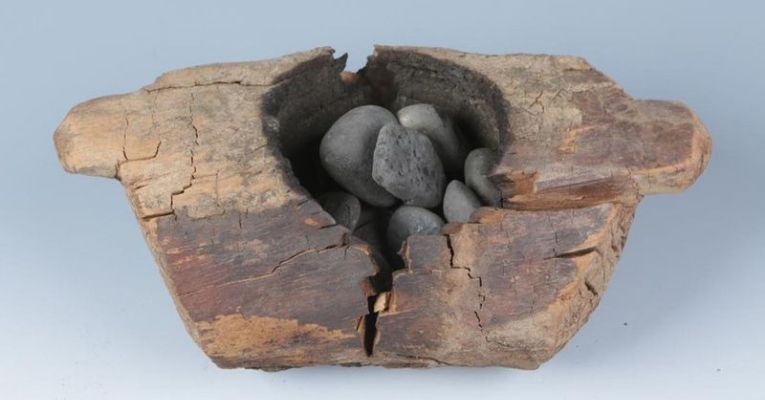Ancient History
Proof of Earliest-Ever Cannabis Smoking Discovered in Mountains of China
The find proves that for millennia humans have been using cannabis for what it’s best known for today: smoking up and getting high.

(TMU) — Around 2,500 years ago in the mountains of western China, people used cannabis to regularly get high during rituals—according to an excavation that dug up the oldest evidence of weed-smoking ever to be found.
Proof of ancient cannabis-smoking has come in the form of ten wooden burners and charred pebbles that contained residue of a particularly potent strain. The kits were found in the Jirzankal cemetery in the Pamir Mountains lying near the border with Pakistan and Tajikistan, which may have been near an ancient trade route of the early Silk Road.
The find, which was unveiled in a new study published Wednesday, proves that while cannabis has been cultivated as a crop for millennia, humans have also been using it for what it’s best known for today: smoking up and getting high.
Study author Robert Spengler, an archaeobotanist at the Max Planck Institute for the Science of Human History in Jena, Germany, said in a statement:
“Our study implies that knowledge of cannabis smoking and specific high-chemical-producing varieties of the cannabis plant were among the cultural traditions that spread along these exchange routes.
Modern perspectives on cannabis vary tremendously cross-culturally, but it is clear that the plant has a long history of human use, medicinally, ritually, and recreationally, over countless millennia.”
Archaeologists believe that the smoking sessions were a part of burial ceremonies where it may have been possible that the smokers hoped to communicate with the dead.
While remnants of the plant have been found at ancients sites in Central Asia in the past, the new discovery clearly points to the intentional inhalation, rather than ingestion, of cannabis containing high levels of the active psychoactive compound, THC.
The fact that the cannabis residue contained such high amounts of THC, unlike wild varieties of cannabis that have low levels of the compound, has led researchers to believe that people were discerning in their approach to the plant and purposely interacted with specific plant populations, according to study co-author Nicole Boivin, also of the Max Planck Institute.
Boivin noted:
“The findings support the idea that cannabis plants were first used for their psychoactive compounds in the mountainous regions of eastern central Asia, thereafter spreading to other regions of the world.”.
However, the cannabis probably wasn’t smoked in bongs, pipes, or spliffs. Instead, it was likely burnt inside the wooden brazier over hot coals in a small, enclosed space where people inhaled the vapors.
Boivin told CNN:
“This is the only way that cannabis could have been smoked prior to the arrival of pipe technology, which is not until much later, it seems.”
Until now, archaeological evidence of people smoking cannabis has proven elusive. While it has been known that cannabis has had a presence in Asia since at least 4000 BC, this was mainly attributed to its oily seeds and fibers.
But what makes this latest find unique is that it proves how humans have long been curious about—and experimented with—different strains of cannabis. And in this case, the find indicates that consumers may have shown a preference for varieties of the plant with more potent psychoactive and medicinal properties.
Spengler explained:
“There has been a longstanding debate over the origins of cannabis smoking, there are many speculative claims of ancient use … This study provides the earliest unambiguous evidence for both elevated chemical production in the plant and also for the burning of the plant as a drug.”
Featured image credit: Xinhua Wu
By Elias Marat | Creative Commons | TheMindUnleashed.com
Typos, corrections and/or news tips? Email us at Contact@TheMindUnleashed.com
